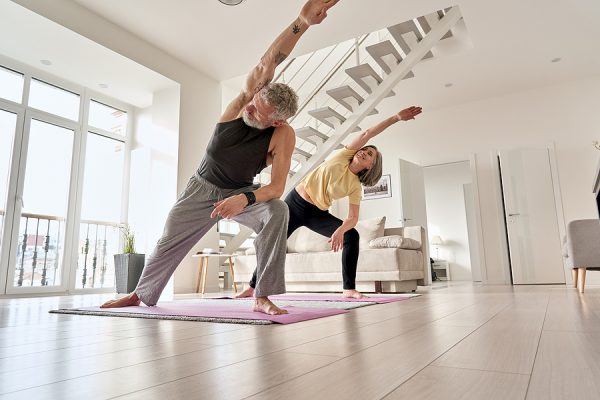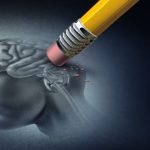By David Blyweiss, M.D., Advanced Natural Wellness
It’s estimated that just over 40% of Alzheimer’s and dementia cases in America are caused by 12 modifiable risk factors: physical inactivity, obesity, high blood pressure, smoking, diabetes, excess alcohol consumption, depression, traumatic brain injury, hearing loss, fewer years of education, social isolation, and air pollution.
That’s a long list! But I can whittle it down quite a bit for you.
The top three risk factors on that list are obesity, physical inactivity and high blood pressure. So if you can take care of these, you can greatly reduce your chances of dementia.
I find it interesting because physical activity is one of the best ways to lose weight and lower blood pressure. So remaining active as you age is the best way to knock all three off these contributors off the list.
Now, in the September 19th issue of Advanced Natural Wellness you learned how something as simple as walking more frequently can help slow cognitive decline, improve cardiovascular health, boost lung function and reduce – even prevent – symptoms of depression.
Well, there’s another activity that’s even easier to do than walking. Most of us do it naturally. And if you’re having a problem getting enough movement to support cognitive health it can help a lot.
Exercise isn’t the Only Way to Slow Cognitive Decline
For people who need exercise but don’t have the strength or stamina to do a lot of physical activity, stretching is a great way to get some of the same benefits of exercise, especially when it comes to reducing your chance of dementia.
Stretching is a natural body movement. Just think about that for a minute.
Babies stretch and flex when they are still inside the womb. Infants stretch after a long sleep to get things moving. They also kick their legs and pump their arms, which strengthens their muscles for their journey into crawling and walking. But their doctor didn’t tell them to do it!
Our bodies instinctively know stretching is good for us. The more we stretch, the better off we are.
At the August, 2022 Alzheimer’s Association International Conference we found out what happens when sedentary men and women between 65 and 89 years of age with mild cognitive impairment – which is often a precursor to Alzheimer’s – start stretching their bodies.
One group of seniors performed moderate intensity aerobic exercise. A second group performed stretching, balancing and range of motion activities.
After 12 months, neither group showed any further cognitive decline! Stretching worked just as well as aerobics to halt further mental deterioration. Both activities appeared to reduce brain shrinkage, protect brain cells against damage and increase the cell number of neurons in the areas where Alzheimer’s begins.
Other studies show that when patients with mild cognitive decline are inactive, they experience a significant cognitive decline over the course of a year.
So whether you are currently active or not, taking part in a good stretching and balancing routine each day is something everyone can do – even those who don’t have enough strength and stamina a to build up a good sweat.
Stretching also helps reduce blood pressure in people stage 1 hypertension. In fact, it can often lower blood pressure better than walking does. And with the right kind of stretching exercises, you can even slash belly fat.
Plus, stretching is great for your aches and pains, whether they are caused by arthritis, tendonitis, sciatica or just plain old everyday aches and stiffness. At the same time, regular stretching improves flexibility and range of motion so that you develop better posture, balance and coordination.
That’s a lot of benefits from a very low impact form of activity.
Is This Why Japan Has the World’s Oldest Population?
There are all kinds of stretching and balancing exercises available to you. A quick Google search will bring up thousands of them. Plus there are always the traditional mind-body activities, such as yoga and tai-chi. I like both of these.
But today I want to introduce you to a program that millions of Japanese participate in daily. It’s called Rajio Taiso – basically radio calisthenics – and is broadcast daily on Japan’s national radio. When it comes on the radio Japanese people everywhere stop what they are doing and participate in the program, sometimes several times a day.
This likely contributes to the fact that Japan has the world’s oldest population, with more than 28% of its population being over 65.
Well during the pandemic a healthcare facility, Human Life Care, released a modified version of this program. They turned it into more of a stretching type activity that’s tailored specifically toward seniors. I think it makes a great daily stretching routine for seniors who are unable to perform regular exercise.
But if you find the modified exercise is too easy for you to do, don’t worry. You can kick up the intensity by checking out the official version of Rajio Taiso which is quite a bit more intense.
SOURCES:
Nianogo RA, Rosenwohl-Mack A, Yaffe K, Carrasco A, Hoffmann CM, Barnes DE. Risk Factors Associated With Alzheimer Disease and Related Dementias by Sex and Race and Ethnicity in the US. JAMA Neurol. 2022 Jun 1;79(6):584-591.
These three risk factors may have the biggest impact on dementia cases. American Heart Association. Mar 2022.
Highlights from the Alzheimer’s Association International Conference 2022. Alzheimer’s Association. Press Release. Aug 2022.
Ko J, Deprez D, Shaw K, Alcorn J, Hadjistavropoulos T, Tomczak C, Foulds H, Chilibeck PD. Stretching is Superior to Brisk Walking for Reducing Blood Pressure in People With High-Normal Blood Pressure or Stage I Hypertension. J Phys Act Health. 2021 Jan 1;18(1):21-28. Puengsuwan P, Kuo CH, Chaunchaiyakul R, Nanagara R, Leelayuwat N. Wand Stretching Exercise Decreases Abdominal Obesity Among Adults With High Body Mass Index Without Altering Fat Oxidation. Front Physiol. 2020 Oct 29;11:565573.




